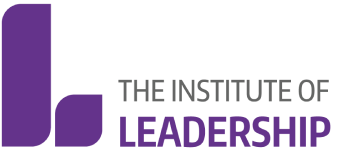Understanding Team Relationship Management (TRM)
Team Relationship Management (TRM) is defined by Hurley (2019) as ‘an approach to improving the performance of your team, along with the well-being of the individuals on it, by developing strong, trusting relationships’, and he describes the ‘architecture’ of TLM as comprising three main elements:

Benefits of effective working relationships
The benefits of effective working relationships and social interactions accrue to individuals, their teams, and to the organisation:

The importance of trust
Every good relationship, personal or professional, is built on trust, and when team members trust each other they are more likely to work co-operatively, communicate openly, encourage each other, and accept feedback and constructive criticism.
This does not necessarily mean that team members must like each other: ‘It is more important to be able to respect and work with colleagues, feeling they will do what they promise. Being reliable and trustworthy is far more powerful than liking each other.’ Yemm, G. (2012)
It therefore follows that leaders must demonstrate behaviours that develop and maintain trust at work if they are to build ‘strong, trusting relationships’ with their teams, such as:
- Reliability and Dependability: A person or group that is true to their word and fulfills their commitments encourages trust
- Transparency: When management meets in secret or does not share important information, team members can easily become distrustful
- Competency: If you think a person, leader or organization is not capable of doing what they are supposed to do, you cannot trust them
- Sincerity, Authenticity and Congruency: People can often sense when someone says something that is not aligned with what they are feeling inside. When a leader is insincere or inauthentic, people don’t believe what he or she is saying. A leader who says one thing but who acts differently is not congruent
- Fairness: Trust cannot grow in a relationship where it’s all about one person or in a workplace where all the energy is focused on the company or leader
- Openness and Vulnerability: A leader who is “never wrong” never gets the truth from others. Yet a timely apology or admission of being wrong is a powerful weapon to build or rebuild trust. (Jaffe, 2018)
Communicating for effective teamworking
Open and honest communication is essential for developing trusting relationships, and ‘how’ and ‘why’ you communicate with your team ‘can have a significant impact on their performance, morale and personal interactions’. Yemm, G. (2012)
Leaders are role models in the example they set for communicating with their team, and should demonstrate the following to develop effective team working:
- Openness in attitude and behaviour: Encouraging open channels of communication and sharing generates active participation and collaboration as well as creating an environment for resolving conflicts
- Communicate expectations: Clearly state your expectations with your team. This way minimises misunderstandings. Team members do not have to guess whether they are doing the right thing
- Act proactively: Be visible to your team, do not stay behind your desk. Go to them, listen to them. It also enables you to spot any problems early
- Communicate positively: Look for opportunities to emphasise the good news, the successes and acknowledge achievements through regular one-to-one feedback and team meetings
- Be a good, or great, listener: Perhaps the most difficult part of communication is effective listening. (Yemm, 2012)
And, most of all, make communication a habit, a ritual:
‘Establishing the rituals of regularly communicating and engaging with your team will enable you to keep your finger on the pulse of your team members’ motivations, desires and needs. It will also allow for proactive corrective actions to be taken if needs be. For instance, it can allow you to sense the dissatisfaction of some at a crucial moment for the business or prevent the loss of your star performer’. Abib-Pech, M. (2013)
References
Abib-Pech, M. (2013). Leadership: How To Lead Effectively And Get Results Pearson Education Limited
Houston, E. (2020). The Importance of Positive Relationships in the Workplace https://positivepsychology.com/positive-relationships-workplace/
Hurley, J. S. (2019). Team Relationship Management. Xmetryx Press
Jaffe, D. (2018). The Essential Importance Of Trust: How To Build It Or Restore It https://www.forbes.com/sites/dennisjaffe/2018/12/05/the-essential-importance-of-trust-how-to-build-it-or-restore-it/
Yemm, G. (2012). Leading your Team Pearson Education Limited
Further Resources


